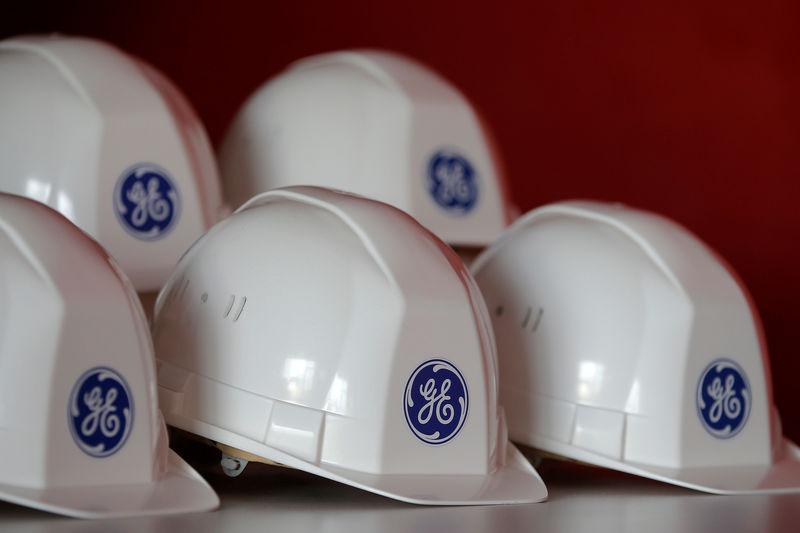Intel stock spikes after report of possible US government stake
Introduction & Market Context
GE Aerospace (NYSE:GE) delivered robust second-quarter results on July 17, 2025, significantly exceeding analyst expectations and prompting management to raise full-year guidance. The company’s stock responded positively, trading up 2.56% in premarket activity at $273, building on its previous close of $266.18.
The aerospace giant reported substantial growth across all key metrics, with particularly strong performance in its commercial services business. This growth comes amid favorable industry conditions, with global air traffic continuing to expand and defense budgets increasing worldwide.
Quarterly Performance Highlights
GE Aerospace reported impressive financial results for Q2 2025, with double-digit growth across all major metrics. The company achieved adjusted revenue of $10.2 billion, representing a 23% year-over-year increase, while operating profit grew at the same rate to reach $2.3 billion with a steady 23.0% margin.
As shown in the following comprehensive results summary:

Adjusted earnings per share reached $1.66, up 38% compared to the same period last year, while free cash flow nearly doubled to $2.1 billion, representing a 92% year-over-year increase. Orders also showed strong momentum at $14.2 billion, up 27% from Q2 2024.
The results demonstrate continued acceleration from Q1 2025, when the company reported EPS of $1.49 and revenue of $9.94 billion. This sequential improvement reflects the company’s successful execution of its operational strategy and growing market demand.
Strategic Initiatives
GE Aerospace’s business is heavily weighted toward services, which account for 70% of its $35 billion in adjusted revenue. The company’s operations are divided into two main segments: Commercial Engines & Services (CES) and Defense & Propulsion Technologies (DPT), with the commercial segment representing the larger portion of the business.
The following breakdown illustrates the company’s business structure and scale:
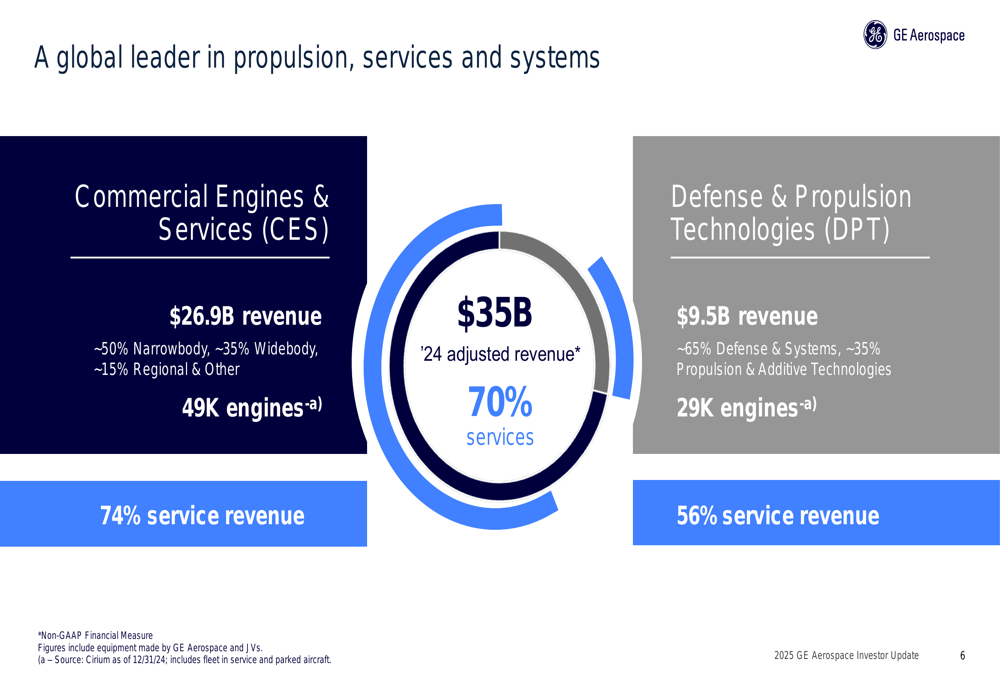
Commercial services emerged as a particular bright spot in the quarter, with revenue increasing by 29% year-over-year, driven by higher shop visit activity and spare parts sales. Engine deliveries also showed strong momentum, growing 45% compared to the same period last year.
The operational improvements are visualized in this chart showing the upward trajectory of both services revenue and engine deliveries:
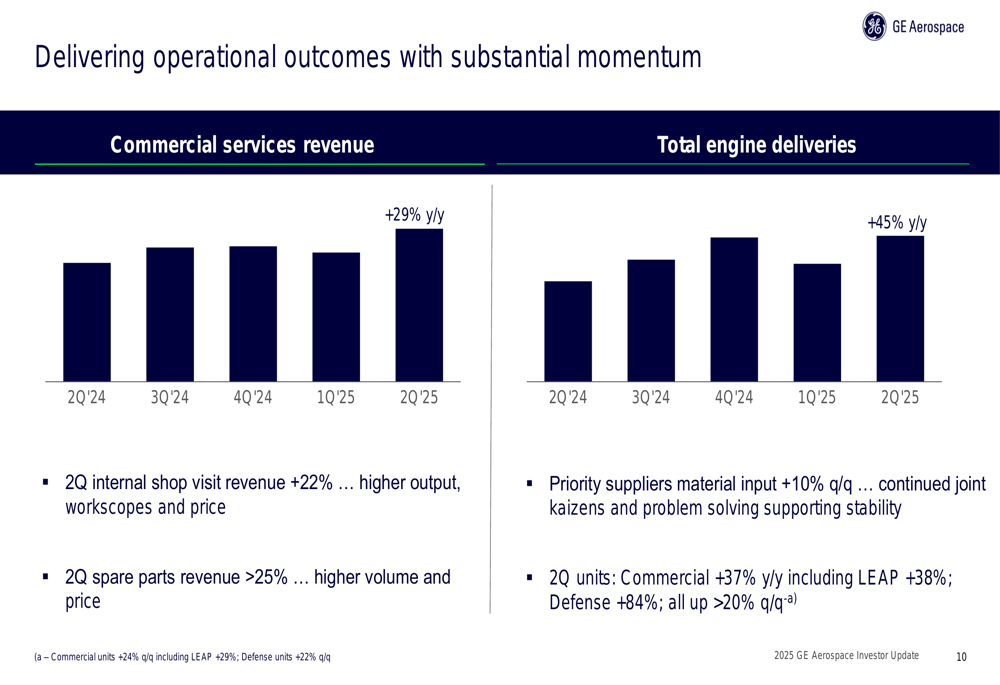
A key strategic focus for GE Aerospace is improving engine durability across its portfolio. The company has made significant progress with its GEnx and LEAP engines, extending time-on-wing in harsh environments by more than 2.5x and 2x respectively through various durability upgrades.
The company is also advancing its next-generation engine programs, including the GE9X for the Boeing (NYSE:BA) 777X and the CFM RISE technology demonstrator program. The RISE program aims to deliver more than 20% improvement in fuel efficiency compared to current engines, with a focus on maintaining or improving durability.
As illustrated in this slide detailing the RISE program priorities:
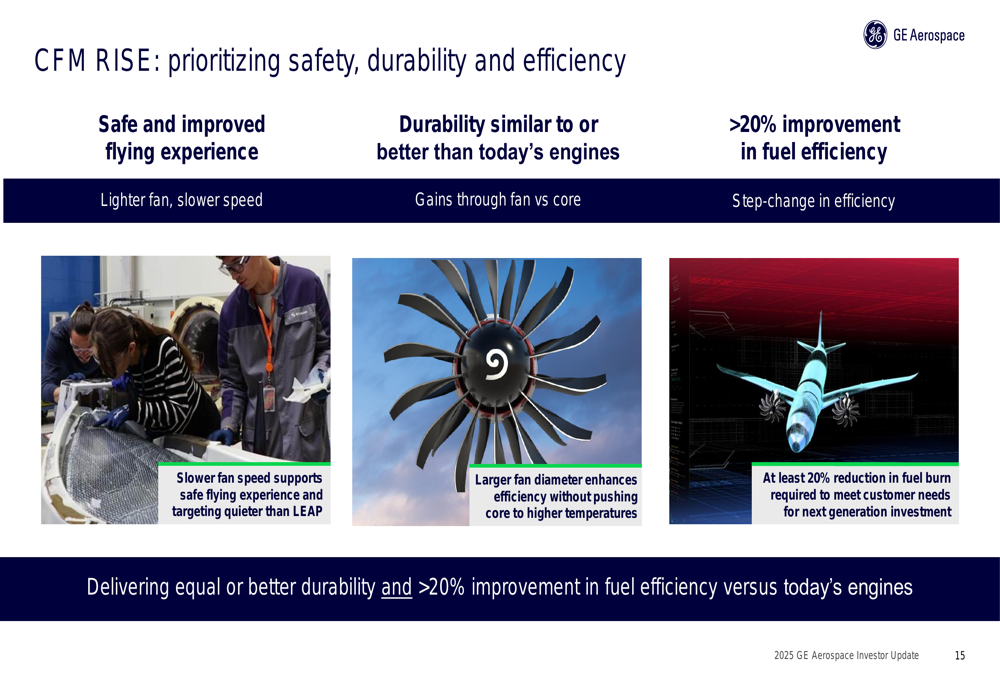
Forward-Looking Statements
Based on its strong first-half performance, GE Aerospace has raised its full-year 2025 guidance across all metrics. The company now expects mid-teens revenue growth for the year, up from its previous low double-digit forecast. Operating profit guidance has been increased to $8.2-8.5 billion from $7.8-8.2 billion, while adjusted EPS expectations have been raised to $5.60-5.80 from $5.10-5.45.
The following chart details the company’s revised 2025 guidance compared to previous forecasts:

Looking further ahead, GE Aerospace has also increased its 2028 outlook, projecting continued double-digit compound annual growth in revenue. The company now expects adjusted EPS of approximately $8.40 by 2028, representing operating profit of around $11.5 billion – $1.5 billion higher than its previous forecast. Free cash flow is projected to reach approximately $8.5 billion, also $1.5 billion above prior expectations.
The company’s long-term financial targets are summarized here:
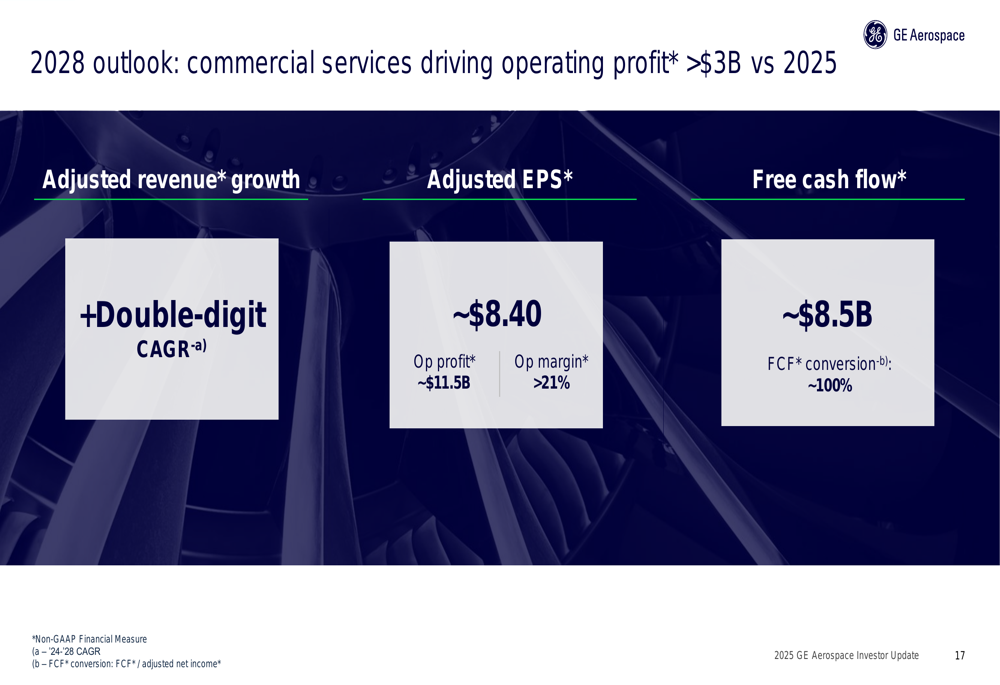
Commercial services are expected to be a major driver of this growth, with both narrowbody and widebody segments projected to deliver strong revenue increases through 2030. The narrowbody segment is forecast to achieve low double-digit compound annual growth with approximately 2x revenue by 2030, while the widebody segment is expected to grow at high single digits with roughly 1.5x revenue expansion.
Competitive Industry Position
GE Aerospace has built its competitive position on a foundation of established engine platforms while developing next-generation technologies. The company’s approach spans from leveraging experience with mature products to evolutionary improvements and breakthrough innovations across its narrowbody, widebody, and defense portfolios.
This strategic evolution across product lines is illustrated in the following slide:
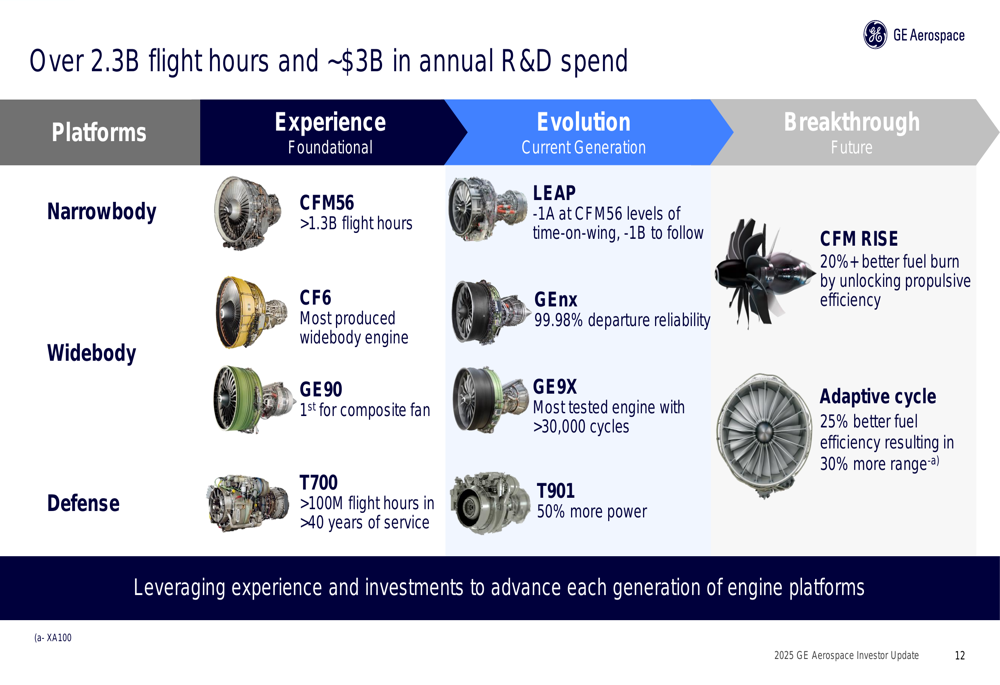
The company continues to expand its installed base, securing significant new contracts including a $5 billion deal with the U.S. Air Force for F110 engines and a major widebody agreement with Qatar Airways for more than 400 engines – the largest in GE Aerospace’s history. The company also won a contract with IAG for 32 GEnx-powered Boeing 787s for British Airways.
GE Aerospace’s capital allocation strategy emphasizes returning more than 100% of free cash flow to shareholders through 2026, while still investing in growth and innovation. The company has increased its projected capital deployment for 2024-2026 to approximately $24 billion, up from its previous target of $19 billion.
As a summary of its strategic positioning, GE Aerospace presented this overview of its key strengths and focus areas:
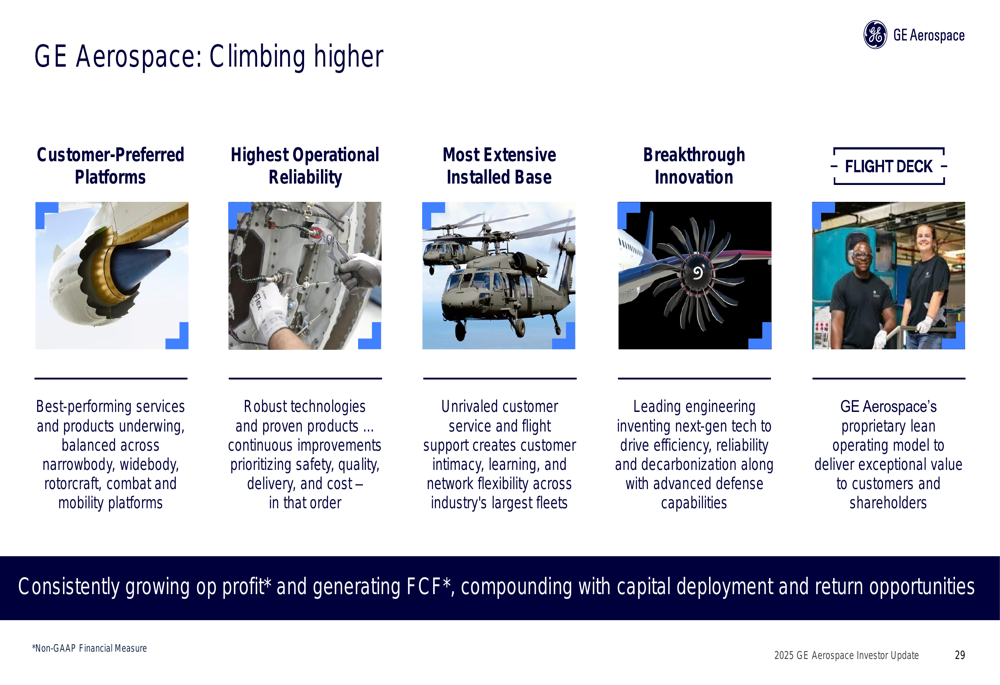
With strong operational performance, a growing installed base, and strategic investments in next-generation technologies, GE Aerospace appears well-positioned to maintain its leadership in the aerospace industry while delivering value to shareholders through both growth and capital returns.
Full presentation:
This article was generated with the support of AI and reviewed by an editor. For more information see our T&C.
